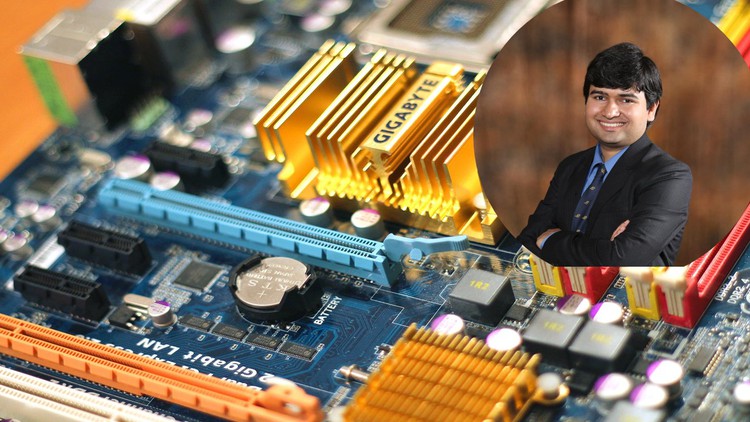
Master the basics of Operating System memory management, virtual memory, page replacement, thrashing from scratch.
What you will learn
Memory management terminology
Where do memory addresses come from?
What are the required memory management properties?
What are some simple memory allocation schemes?
What is fragmentation? (Internal, external fragmentation.)
What is paging?
What is the key idea behind paging?
How paging works?
How is address translation done with paging?
How does paging hardware work?
How is memory address translated by the paging hardware?
How do memory management systems perform address translation without division?
How to make paging efficient?
What is TLB cache?
How does TLB cache work?
What are the performance implications of a TLB cache?
How is the main memory initialized when a process is started?
How context switches are performed in presence of paging?
How does paging facilitate memory sharing?
What is demand paging?
How does demand paging work?
When to load a page in demand paging?
How is demand paging implemented?
What is swap space?
What are the performance implications of demand paging?
How is TLB cache updated with demand paging?
What are page replacement algorithms?
What is FIFO page replacement?
What is MIN page replacement?
What is Random page replacement?
What is LRU page replacement?
What is Belady’s anomaly?
What is thrashing?
How to limit thrashing?
What is working set?
Description
Ace operating systems (OS) memory management, paging, virtual memory, page replacement, thrashing, working set questions in competitive exams, job interviews, and OS course exams.
Do you know: How the OS presents an illusion of infinite memory to users? How can the OS execute processes much bigger than the RAM (main memory)? Where do memory addresses come from? How does OS keep several processes inside the RAM for execution? How OS makes room for new processes when the RAM is full? What happens if there are too many processes in the RAM? Learn the explanations to these and many more intriguing questions in this course!
Specifically, the course will cover the following in detail.
- Memory management terminology
- Where do memory addresses come from?
- What are the required memory management properties?
- What are some simple memory allocation schemes?
- What is fragmentation?
- What is internal fragmentation?
- What is external fragmentation?
- What is paging?
- What is the key idea behind paging?
- How paging works?
- How is address translation done with paging?
- How does paging hardware work?
- How is memory address translated by the paging hardware?
- How do memory management systems perform address translation without division?
- How to make paging efficient?
- What is TLB cache?
- How does TLB cache work?
- What are the performance implications of a TLB cache?
- How is the main memory initialized when a process is started?
- How context switches are performed in presence of paging?
- How does paging facilitate memory sharing?
- What is demand paging?
- How does demand paging work?
- When to load a page in demand paging?
- How is demand paging implemented?
- What is swap space?
- What are the performance implications of demand paging?
- How is TLB cache updated with demand paging?
- What are page replacement algorithms?
- What is FIFO page replacement?
- What is MIN page replacement?
- What is Random page replacement?
- What is LRU page replacement?
- What is Belady’s anomaly?
- What is thrashing?
- How to limit thrashing?
- What is working set?
30 day money back guaranteed by Udemy.
Wisdom scholarships. If you are interested in taking one of our courses but cannot purchase it, you can apply for a scholarship to enroll. Learn more about the application process at my website.
Content